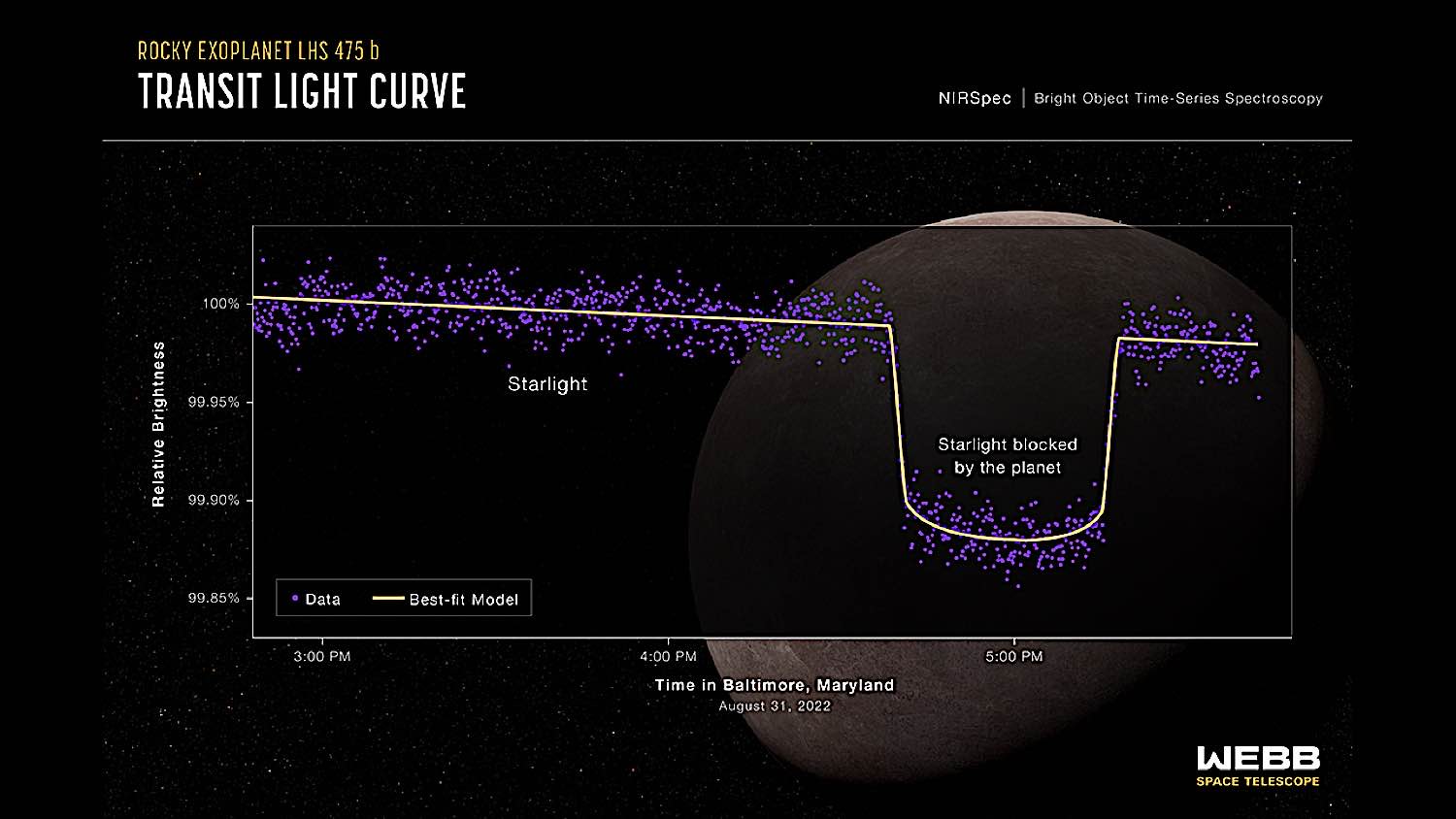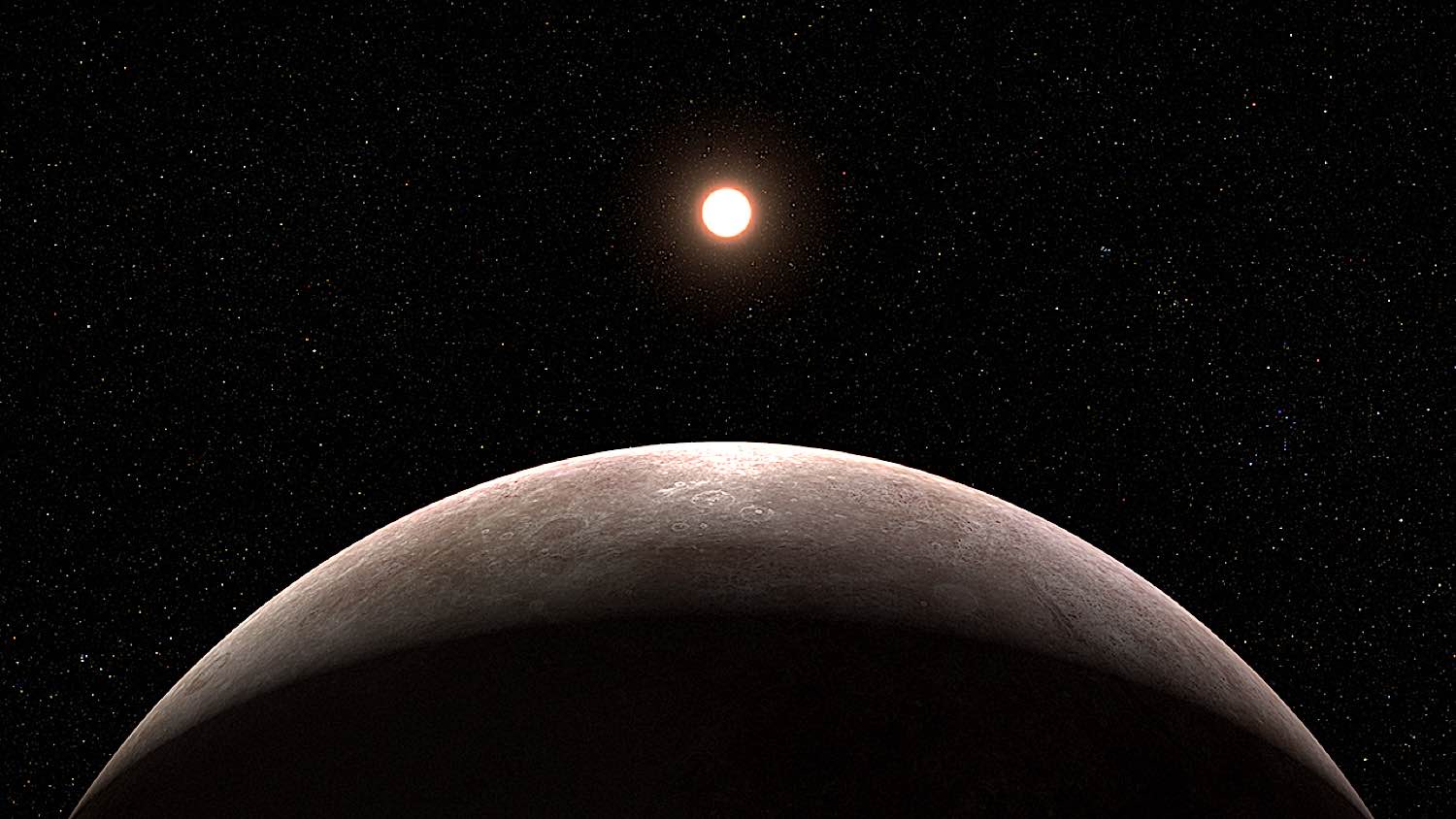The James Webb Telescope (JWST) is a space telescope launched on December 25th, 2021. It is the most powerful and advanced telescope of its kind. The JWST aims to explore distant galaxies and planets, study dark matter and energy, trace our origins back to the Big Bang, and search for signs of life outside our Solar System.
In a press conference held by the American Astronomical Society on Wednesday, January 11th, 2023, the telescope’s team of scientists and engineers announced that they had successfully verified its first exoplanet: LHS 475 b. The team, led by Kevin Stevenson and Jacob Lustig-Yaeger from the John Hopkins Applied Physics Laboratory in Baltimore, Maryland, confirmed the planet’s existence, marking a historic moment in astrophysics. [1]
About Exoplanets
Exoplanets are planets that exist outside of our Solar System. They have been a subject of intense study for astronomers and astrobiologists since 1992 when Aleksander Wolszczan and Dale Frail discovered the first exoplanet. Most exoplanets orbit around stars outside our Solar System, although a few have been found to wander freely in interstellar space (sometimes called rogue planets).

Scientists believe that exoplanets could potentially harbor life, as they come in many shapes and sizes and can orbit stars in different ways. As such, the verification of an exoplanet by JWST is a huge leap forward in our understanding of our place within the universe. The problem is that due to their great distance from us, exoplanets can be extremely hard to detect and even harder to analyze.
Since 1992, thousands of exoplanets have been discovered using various techniques in only a small fraction of the universe. NASA’s Transiting Exoplanet Survey Satellite (TESS) has been instrumental in finding new exoplanets using the transit detection method. This method is based on the idea that when an exoplanet passes between us and its star, it blocks some of the star’s light. By monitoring small changes in brightness, astronomers can use this data to detect a planet’s presence.[2]
What is a transit light curve?
The transit light curve is a graph that shows the amount of light blocked by an exoplanet as it passes between us and its star. It can be used to study the properties of exoplanets, such as their size, mass, atmospheric composition, and more. The longer an exoplanet passes in front of its star, the more light is blocked, and the bigger the dip in brightness will be on the graph. The brightness of each wavelength is measured at set intervals of time and compared to the pre-transit values, providing astronomers with a wealth of data that can be used to study the exoplanet.
For example, when studying LHS 475 b, Webb observed the star system for roughly three hours. It started 1.5 hours before the transit and continued for 30 minutes afterward. This allowed the team to gather 1,158 observations of the star’s brightness. From these observations, they were able to plot a transit light curve by comparing the brightness of each wavelength before and after the transit.[3]

The Transmission Spectrum
What separates the JWST from other telescopes is its ability to observe exoplanets in unparalleled detail. It can characterize the atmosphere of exoplanets using the transmission spectrum technique. With its Near-Infrared Spectrograph (NIRSpec), it measures the absorption of light by molecules in a planet’s atmosphere, which can be used to detect elements like oxygen, and methane. Depending on the composition of a planet’s atmosphere, these molecules can absorb different wavelengths of light. By measuring these absorptions and comparing them to known chemical signatures, scientists can identify the chemical components of an exoplanet’s atmosphere.
For instance, a hydrogen-dominated atmosphere would likely be the result of a light gaseous atmosphere. The green line on the transmission spectrum shows the presence of methane, which blocks sunlight at only 3.3 microns. If a planet’s atmosphere possessed such characteristics, conditions would be similar to that of Saturn’s moon Titan.
Purple and yellow lines on the transmission spectrum are the most tricky to interpret. Purple represents carbon dioxide, an essential ingredient for life. Yellow indicates the absence of light-absorbing molecules, suggesting a cloudless atmosphere. Distinguishing between the two requires further study, as both appear to have similar properties.
Jacob Lustig-Yaeger explains: “We require very, very precise data to be able to distinguish a pure carbon dioxide atmosphere from no atmosphere at all. A pure carbon dioxide atmosphere may be thin like the one on Mars, making it difficult to detect.” [4]

Webb Confirmed “LHS 475 b.”
First, it’s worth noting that the James Webb Telescope did not discover the exoplanet. It was discovered by the TESS mission and was designated LHS 475 b. During two transit observations, the JWST team used the transmission spectrum technique and NIRSpec to analyze the exoplanet they successfully verified. The data collected from this method revealed a flat yellow line on the transmission spectrum, implying no detectable clouds or hazes in the atmosphere.
However, it is still too early to make any definitive conclusions about the composition of its atmosphere. The team cannot yet speculate on which molecules are present, but they can rule out certain ones based on the data gathered. For one, a methane-dominated atmosphere is unlikely. Another possibility is an atmosphere that is dominated by carbon dioxide. As mentioned above, an atmosphere made of 100% carbon dioxide is so compact that it is difficult to detect.
One interesting revelation was that the planet was several hundred degrees hotter than Earth. As such, if the atmosphere does contain carbon dioxide clouds, it might be comparable to another cloud-covered world: Venus. Venus is often called Earth’s “evil twin” because, while it is similar in size to Earth, its thick toxic atmosphere makes it inhospitable to life. Curiously, LHS 475 b was found to also have a similar mass and size to Earth. It measures 99% of Earth’s diameter but is much hotter.
What else do we know about LHS 475 b?
Although the main event during the press conference pertained to the exoplanet’s atmosphere, there were other notable mentions. For starters, the exoplanet is relatively close to us, being only 41 light-years away. It resides in the Octans constellation, a very faint grouping of stars in the southern sky.
As for its planetary behavior, it is quite different from that of our own solar system. The exoplanet orbits LHS 475, a red dwarf star with only one known planet in its system. It is considered to be an “ultracool” star, meaning it is much cooler and dimmer than our Sun. Red dwarf stars are the smallest yet most common stars in the Milky Way galaxy. As such, even though LHS 475 b takes only two days to make a full orbit, it’s not necessarily too hot to have an atmosphere.
For comparison, Mercury takes 88 days to make a full orbit around the Sun and has no atmosphere due to its proximity to the star. However, since LHS 475 b is orbiting an ultracool dwarf star, it can have a Venus-like atmosphere despite its close proximity. The orbit was confirmed using the light curve technique, which can be used to detect the dips in brightness that occur when planets transit their stars.
Finally, LHS 475 b is a rocky planet. Astronomers typically differentiate gaseous and rocky planets by their masses. They can measure a planet’s mass by calculating the gravitational pull on its parent star.
What It Means For The Future
The successful verification of LHS 475 b is a major milestone for the James Webb Telescope and its mission. Its ability to detect exoplanetary atmospheres efficiently and accurately will open the door for many exciting discoveries in the years to come. This particular discovery also proves that there are many Earth-like planets out there with potentially habitable atmospheres.
It is also important to note that the techniques used in this mission can also be applied to other planets. Astronomers will now have the tools they need to analyze planetary atmospheres in greater detail than ever before, which could lead to many unexpected discoveries about our universe and its inhabitants.
Mark Clampin, Astrophysics Division director at NASA Headquarters in Washington, summed up the excitement: “These first observational results from an Earth-size, rocky planet open the door to many future possibilities for studying rocky planet atmospheres with Webb. Webb is bringing us closer and closer to a new understanding of Earth-like worlds outside our solar system, and the mission is only just getting started.”
This summer, the researchers are expected to obtain more spectra with additional observations. The data will be made public once processed and analyzed, per NASA’s commitment to open access to its scientific findings.
What do you think of this news? Do you think the James Webb Telescope will make groundbreaking discoveries about planets outside our solar system? Let us know your thoughts in the comments below!
Sources
[2] NASA “Tess Transiting Exoplanet” >>
[3] Images of the Webb Space Telescope>>
































